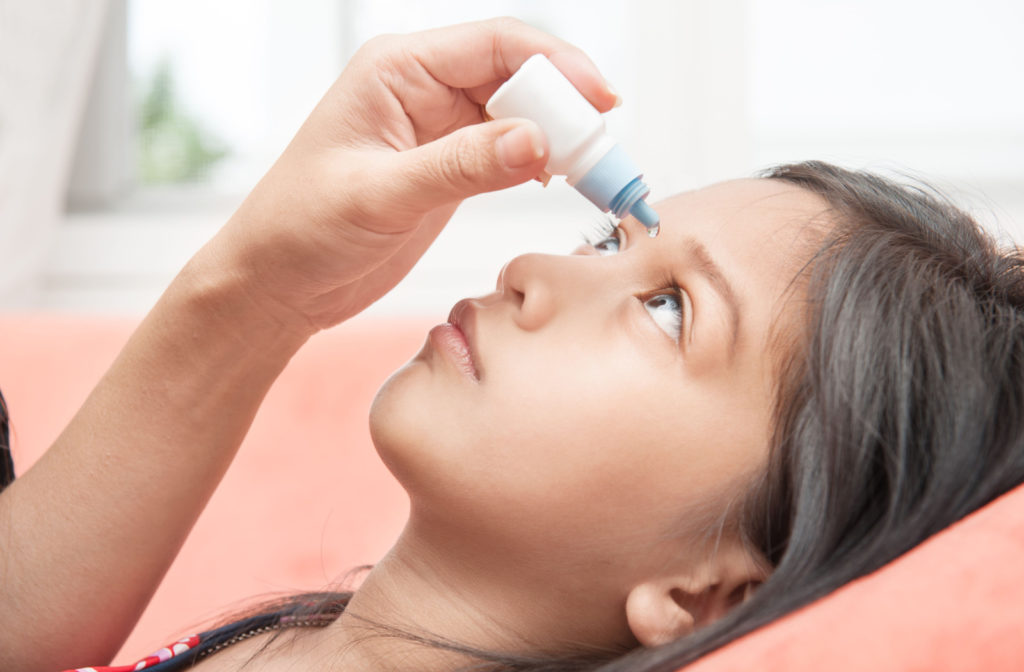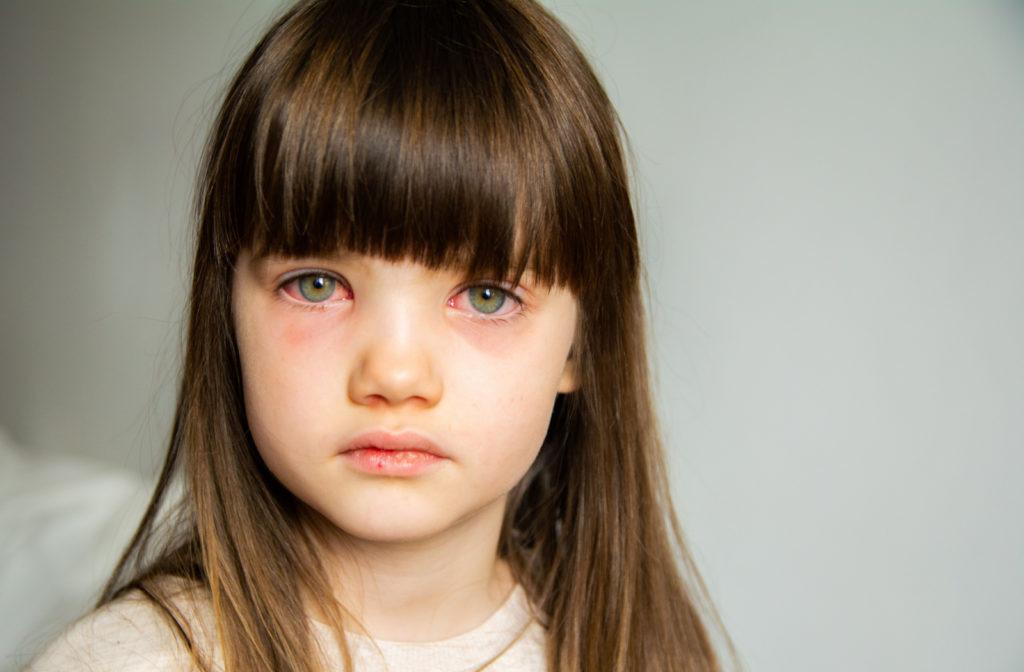As a parent, one of the most challenging experiences is dealing with your child’s health. There’s nothing quite like seeing your little one come down with an illness, and pink eye is undoubtedly one of the more uncomfortable and contagious ones. If a child shows signs of pink eye, they may require an eye exam to discover what’s going on.
Certain types of pink eye are highly contagious and can spread quickly if your kid goes to school. Your child should not go to school with pink eye. Once they’ve started treatment and are no longer showing symptoms, your doctor may approve your child returning to class.
What Is Pink Eye?
Pink eye, also known as conjunctivitis, causes inflammation of the conjunctiva, which is the thin tissue surrounding the white part of the eye and the eyelid.
There are 3 common types of pink eye:
- Viral
- Bacterial
- Allergic
Additionally, chemicals, such as fumes, smoke, or toxic liquids, can cause chemical conjunctivitis. This can be very dangerous, and if it happens to you or a family member, contact your optometrist right away, as this is considered an eye emergency.
Viral Pink Eye
Viral conjunctivitis is an infection caused by a virus, such as the common cold. Just like the common cold, it is highly contagious. It can spread through coughing, sneezing, and touching contaminated surfaces, leading to large outbreaks if people aren’t careful.
Bacterial Pink Eye
Much like its viral cousin, bacterial conjunctivitis occurs when a foreign body infects your conjunctiva, but in this case, it’s a bacteria. Transmission typically occurs through direct or indirect contact with an infected person or object.
This may sound less threatening than viral pink eye, which can be airborne, but bacterial pink eye can spread easily, especially in school or work settings.
Allergic Pink Eye
Allergic conjunctivitis happens when an allergen enters your eye, causing an allergic reaction. Common eye allergens include:
- Pollen
- Dust mites
- Molds
- Pet dander
- Medicines
- Eye cosmetics
It’s not contagious, though people with similar allergies could show symptoms around the same time, such as during days with high pollen counts. An eye doctor can help determine the cause.
Pink Eye Symptoms
The types of pink eye have many shared symptoms that can make them easy to recognize but harder to tell apart. Signs your kid may have pink eye include:
- A telltale pink or redness in the whites of the eye
- Swollen eyes or eyelids
- Watery eyes
- Itching or burning sensation
- Eye irritation
- Pus or mucus discharge
- Crusty eyelids or eyelashes (may be worse in the morning)
- An urge to rub their eyes
- The feeling of something stuck in their eye
- Difficulty wearing contact lenses
Pink eye types tend to have their own symptoms that can help determine which one you’re dealing with. Allergic pink eye tends to occur in both eyes at the same time and is characterized by intense itchiness and watering. You may notice other allergy symptoms, like a scratchy throat or sneezing.
Viral pink eye could happen alongside cold or flu symptoms. If your child is overly sensitive to light and the discharge from the eye is watery and more yellow or white, this could be a sign of viral infection.
Bacterial pink eye is known to cause large amounts of green or yellow discharge. This usually happens while you sleep, so it’s not uncommon to wake up feeling like your eyes have been glued shut. Yikes! Your kid may also have an ear infection at the same time.
Is It Safe to Go to School with Pink Eye?
If your child has symptoms and will be in close contact with others, they should not go to school.
Viral and bacterial pink eye are transmitted through contact with an infected person’s eye or nasal fluid. This can either be directly from the infected person or by touching an object or surface they touched, then touching your eyes.
If your kid has conjunctivitis but doesn’t have a fever or other symptoms, they may be allowed to go to school. It’s best to follow your doctor’s recommendations. This could take some time since bacterial infection could last up to 10 days, while viral infections can last up to 14.
It’s crucial to inform the school and other parents of the diagnosis. This allows everyone to take preventative measures to reduce the risk of contagion. It’s also a good idea to give your kid hand sanitizer and instruct them not to share items such as pencils, water bottles, or toys to prevent transmission.
The risk of transmitting pink eye can be reduced through good hand hygiene and refraining from touching one’s eyes.
Some schools or daycares may not have automatic exclusion policies for kids with pink eye, but it’s important to consider the other students and faculty. Your child could potentially infect their friends and cause pink eye to spread rapidly.

Treating Pink Eye
Treatments for pink eye depend on the type. Some types can go away on their own, though you can help ease irritation:
- Viral pink eye can clear up on its own, but you can help relieve your child’s symptoms by using cool compresses and over-the-counter eye drops.
- Mild bacterial pink eye can get better without treatment in as little as 2–5 days but may require antibiotics if it’s severe enough.
- Allergic pink eye can be entirely avoided by removing the allergen, but you can lessen the symptoms with antihistamines.
Preventing the Spread of Pink Eye
While some schools might not exclude children with pink eye, parents should consider the severity of the symptoms and the risks of contagion before sending their child to school. Pink eye can be highly contagious, and we all need to work together to limit its spread.
While most infections are mild, if your child’s pink eye isn’t improving, book an appointment at Rancho Santa Margarita Optometry.


